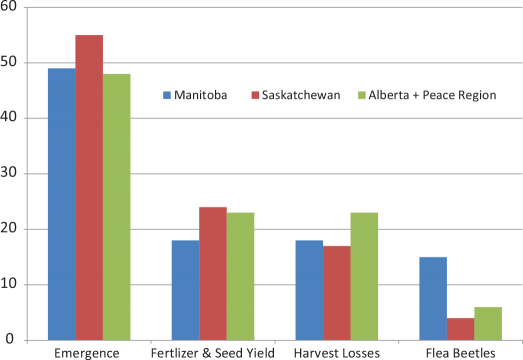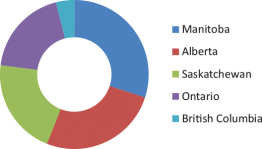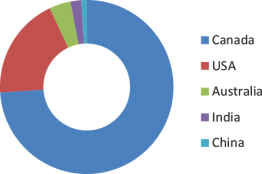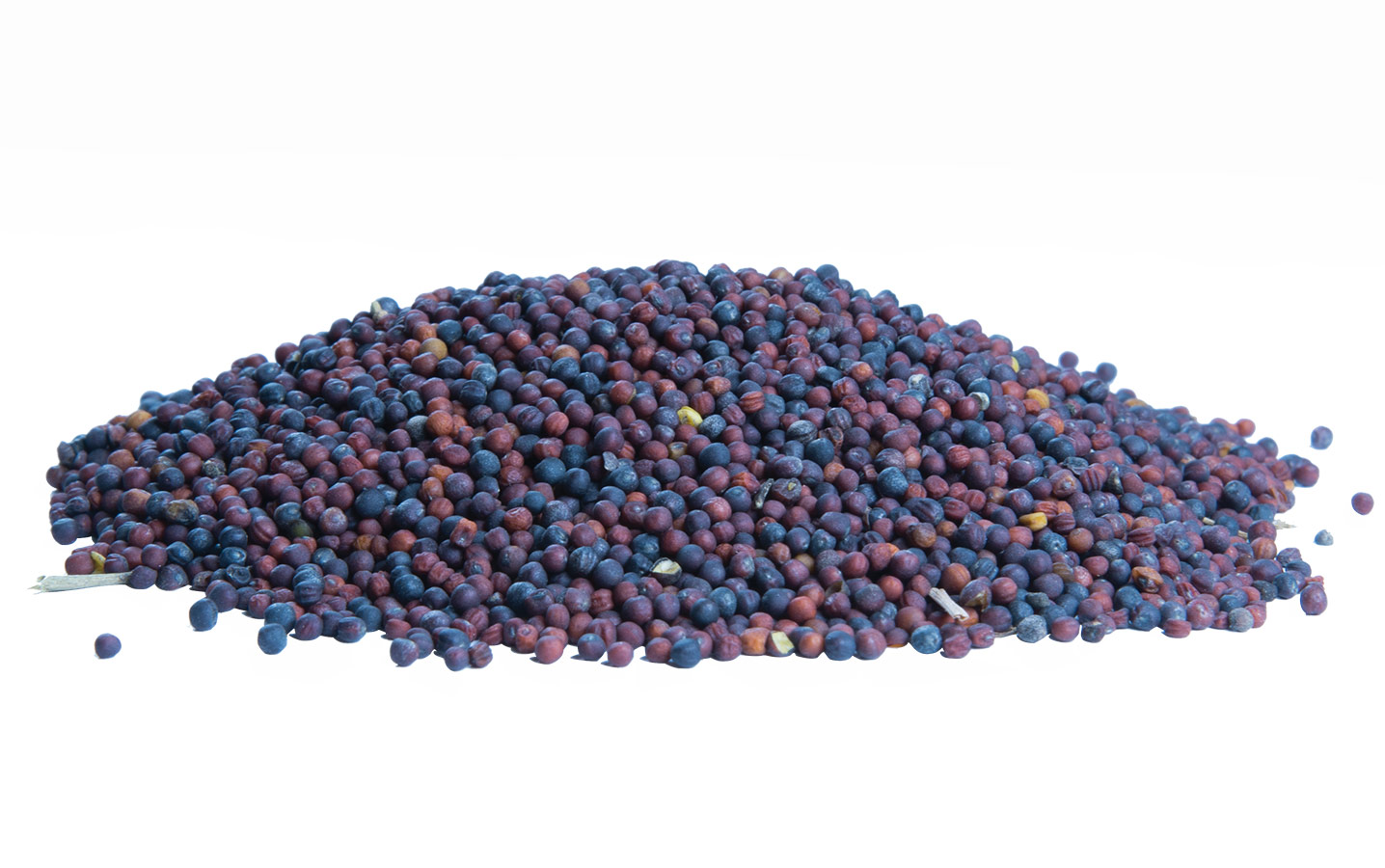The Hub’s top five searched
The Canola Research Hub is designed to translate agronomic research findings into on-farm practices that improve productivity and profitability. The online library houses over 100 reports and summaries from programs including Agriculture and Agri-Food Canada’s Growing Forward 1 and 2, the Canola Agronomic Research Program (CARP), studies funded by the provincial grower groups, and the Ultimate Canola Challenge (UCC).
Visitors to the site come from across the country and around the globe, and traffic has steadily increased each year. Here are the top five most-viewed research summaries:
- Project: Environmental footprint of canola and canola-based products
Principal Investigator: Vern Baron, Agriculture and Agri-Food Canada, Lacombe, Alta. - Project: Legume crops to improve soil fertility for enhanced canola production
Principal Investigator: John O’Donovan, Agriculture and Agri-Food Canada, Lacombe, Alta. - Project: Factors influencing canola emergence
Principal Investigator: K. Neil Harker, Agriculture and Agri-Food Canada, Lacombe, Alta. - Project: Evaluation of harvest losses and their causes in canola across Western Canada
Principal Investigator: Rob H. Gulden, University of Manitoba, Winnipeg, Man. - Project: Management practices for optimum canola emergence
Principal Investigator: Robert Blackshaw, Agriculture and Agri-Food Canada, Lethbridge, Alta
Most Popular Query Topics By Province

TOP 5 – USERS BY PROVINCE

TOP 5 – USERS BY Country

Navigating the site
To find these studies, click “Search the Hub library” in the Research Summaries box on the homepage at canolaresearch.ca and use the Advanced Search option to search by principal investigator.
While there, take time to explore for other studies. Each study is categorized under one of four agronomic research pillars: Plant Establishment, Fertility Management, Integrated Pest Management or Harvest Management. Links are provided where available to full final reports, published papers and downloadable summaries. Advanced search functions allow users to find studies based on other parameters such as timeframe, organization or testing location.
For more information on navigating the Hub, at canolaresearch.ca, view a guided-tour tutorial available from the landing page. Or, anywhere you see ‘?’ , click to access the FAQs.
Providing top science for the bottom line.
Back at the Hub’s landing page, go to the Media box for researcher interviews and video clips, multimedia materials and science-based industry news.
The “Research database” contains a wealth of information that can be analyzed and packaged into dashboards illustrating the science behind best-practice recommendations for canola production. Filtering capabilities allow the user to focus on results that are most relevant to their own conditions and concerns. These dashboards are fully referenced back to each study from which supporting data was drawn.
For more information on using the Canola Research Hub, view the short tutorial “Guided tour” available on the landing page at canolaresearch.ca.
The Canola Research Hub, launched in 2015, is a tangible return on the canola industry’s investment in this research through the Canola Council of Canada (CCC), government-backed partnerships and grower check-off dollars paid through their provincial organizations.
“(Don’t) go necessarily by a recipe approach (when seeding). Under most conditions, we’d recommend that you seed shallow – about 1/2 an inch – and that you check when you go to a different field to make sure the seeder is set at that depth.”
Seed size and yield
Larger versus smaller seed could increase crop density and decrease plant mortality, days to flowering, days to end of flowering and days to maturity. Learn more by reading Neil Harker’s study “Seed size and seeding rate effects on canola yield and quality” at canolacouncil.org/links/seed-size.
See the full video, and interviews with other researchers, at canolacouncil.org/links/hub-videos.





